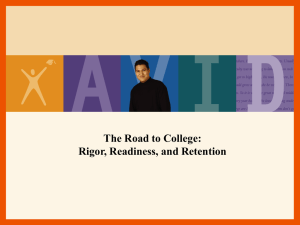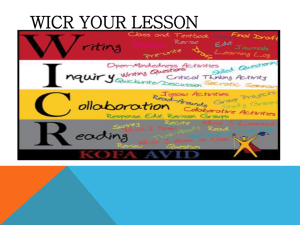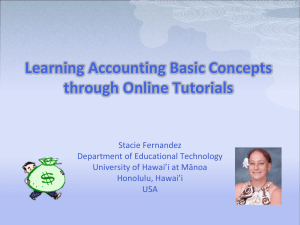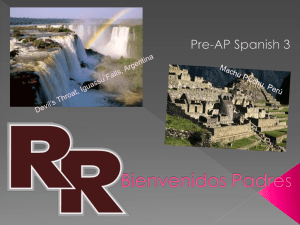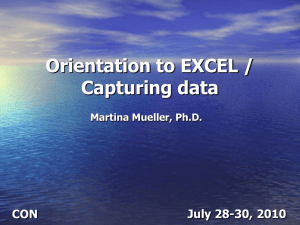2011 AVID PPT Format - Jenks Public Schools
advertisement
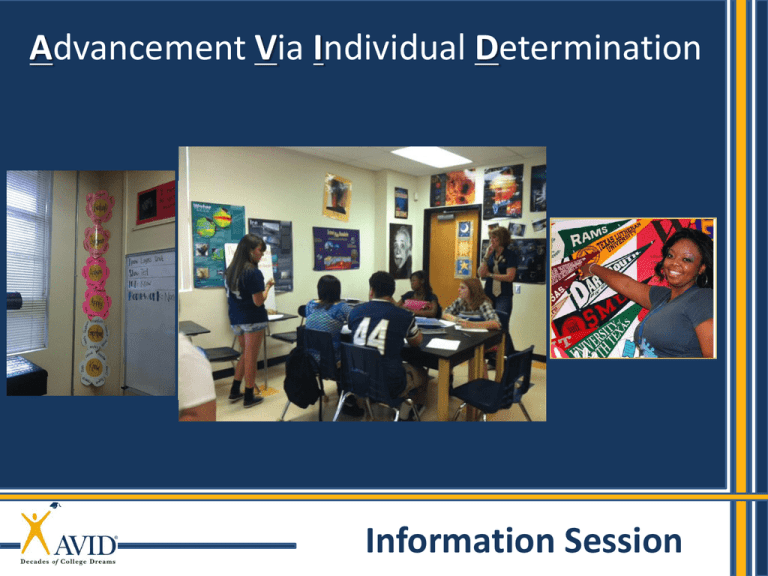
Advancement Via Individual Determination Information Session AVID’s mission AVID's mission is to close the achievement gap by preparing all students for college readiness and success in a global society. 2 Missions Toward a Common Goal • Jenks Public Schools, • AVID's mission is inspired by a tradition of to close the excellence, is achievement gap committed to the by preparing all shared responsibility of students for preparing all learners college readiness for productive, and success in a responsible citizenship global society. in an ever-changing world. 3 Why AVID? College Completion Rates Average student 56% AVID students 89% Reasons Given for Not Completing College Not being prepared for the rigors of academic work Juggling demands of study, work, family, etc. Cost 4 What is AVID? A structured college preparatory system working directly with schools and districts A direct support structure for firstgeneration college goers, grades K-16 A schoolwide approach to curriculum and rigor 5 What is AVID? A non-profit, college readiness system A support structure for students who have the potential to be successful in college but may lack some necessary skills For elementary through postsecondary grade levels A schoolwide approach to rigorous curriculum Professional development for educators 6 Where in the world is AVID? *Numbers as of 10/1/11 7 The AVID Elective student profile Has academic potential Average to high test scores 2.0-3.5 GPA College potential with support Desire and determination 8 The AVID Elective student profile Meets one or more of the following criteria: First to attend college Historically underserved in four-year colleges Low income Special circumstances 9 The 11 Essentials 1. AVID student selection 2. Voluntary participation 3. AVID elective class offered during the school day 4. Rigorous course of study 5. Strong, relevant writing and reading curriculum 10 The 11 Essentials 6. Inquiry to promote critical thinking 7. Collaboration as a basis of instruction 8. Trained tutors 9. Data collection and analysis 10. District and school commitment 11. Active, interdisciplinary site team 11 WICOR Writing Writing process (prewrite to final draft) Respond, revise Edit, final draft Cornell Notes Quickwrites Learning logs, journals 12 WICOR Inquiry Skilled questioning Socratic Seminars Quickwrites/discussions Critical-thinking activities Writing questions Open-minded activities 13 WICOR Collaboration Group projects Response/edit/revision groups Collaboration activities Tutorials Study groups Jigsaw activities Read-arounds 14 WICOR Organization Tools Binders Calendars, planners, agendas Graphic organizers Methods Focused note-taking system Tutorials, study groups Project planning, SMART goals 15 WICOR Reading SQ5R (Survey, Question, Read, Record, Recite, Review, Reflect) KWL (What I Know; What to Learn; Learned) Reciprocal teaching “Think-alouds” Text structure Critical reading 16 A sample week in the AVID Elective Daily or Block Schedule Monday Tuesday Wednesday Thursday Friday AVID Curriculum Tutorials AVID Curriculum Tutorials Binder Evaluation Field Trips Media Center Speakers Motivational Activities (within block) Combination for Block Schedule Curriculum: Writing College and Careers Strategies for Success Critical Reading Combination for block schedule Tutorials: Collaborative Study Groups Writing Groups Socratic Seminars 17 Four-Year Curriculum 9th Grade Organization and Note-taking 10th Grade Academic Reading and Writing 11th Grade College Entrance Exams (ex.: ACT) 12th Grade College and Scholarship Applications NOTE: Last year’s senior class received $279,854 in scholarships! 18 What is academic rigor? Rigor is the goal of helping students develop the capacity to understand content that is complex, ambiguous, provocative, and personally or emotionally challenging. Source: Teaching What Matters Most; Standards and Strategies for Raising Student Achievement, by Strong, Silver and Perini, ASCD, 2001 19 Why Rigor? Rigorous curriculum is a greater factor in determining college graduation rates than class standing, standardized test scores, or grade point average. From: Answers in the Tool Box: Academic Intensity, Attendance Patterns, and Bachelor's Degree Attainment (1999) by Clifford Adelman, Senior Research Analyst, U.S. Dept. of Ed. 20 Meeting the challenge Develop as readers and writers Develop deep content knowledge Know content specific strategies for reading, writing, thinking, and talking Develop habits, skills, and behaviors to use knowledge and skills 21 More than 30 years of success In just over 30 years, AVID has become one of the most successful college-preparatory programs for low-income, underserved students, and today reaches more than 425,000 students in approximately 4,800 schools in 48 states and 16 other countries/territories. Since 1990, more than 110,000 AVID students have graduated from high school and planned to attend college. 22 Contact Information Judi Thorn District Director judi.thorn@jenksps.org 918-299-4411, ext. 2351 Shelli Temple Site Coordinator shelli.temple@jenksps.org 918-299-4411, ext. 3110 23
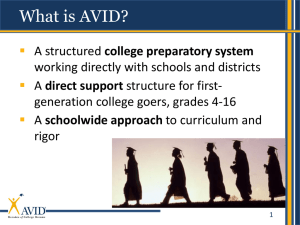
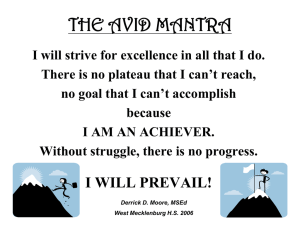
![avid parent night 1[1].](http://s2.studylib.net/store/data/005364026_1-3545164f7508a237d75956b3943e7277-300x300.png)

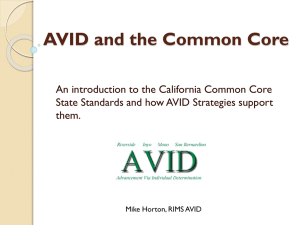

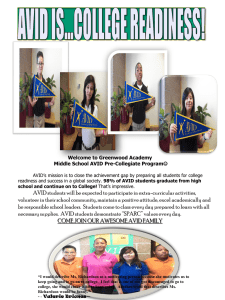
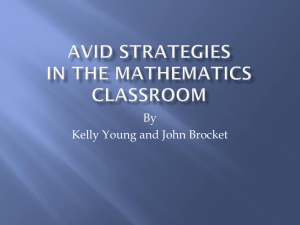


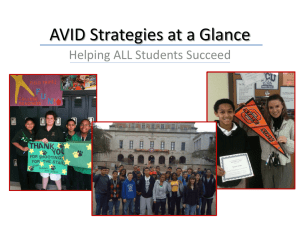
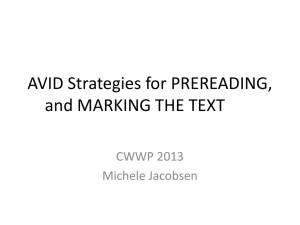
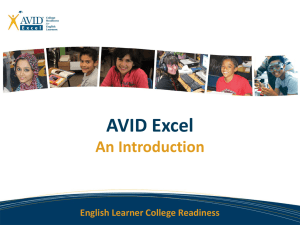
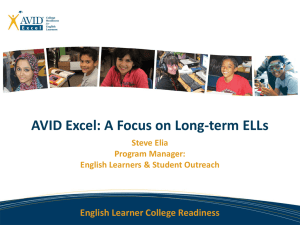
![Home_files/AVIDPresentation1[1]](http://s2.studylib.net/store/data/005349635_1-1720522e60b025b63ed98b9f92c1bc50-300x300.png)

